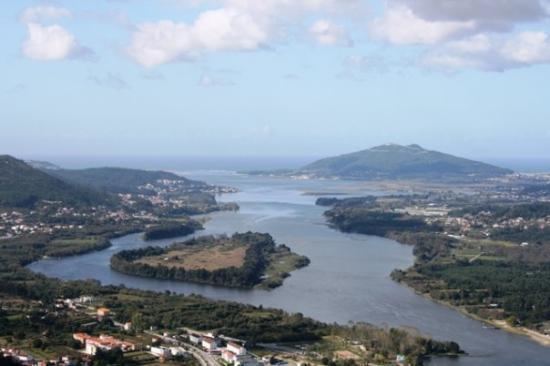Subregion Minho-Lima Local time Monday 10:58 AM | Region Norte Parishes 11 Population 9,253 (2011) | |
 | ||
Weather 16°C, Wind W at 2 km/h, 76% Humidity Points of interest Parque de Lazer de Castelinho, Aquamuseu do Rio Minho, Castelo de Vila Nova de Cervei | ||
Casa de figueir vila nova de cerveira portugal
Vila Nova de Cerveira ([ˈvilɐ ˈnɔvɐ ðɨ sɨɾˈvɐjɾɐ], [ˈbilɐ ˈnɔβɐ ðɨ sɨɾˈβɐjɾɐ]) is a municipality in the district of Viana do Castelo in Portugal. The population in 2011 was 9,253, in an area of 108.47 km².
Contents
- Casa de figueir vila nova de cerveira portugal
- Map of Vila Nova de Cerveira Portugal
- Casa da vila cerveira vila nova de cerveira portugal
- Parishes
- General information
- Location
- The name of the village
- History
- Attractions
- References
Map of Vila Nova de Cerveira, Portugal
The present Mayor is Fernando Nogueira, elected by the PenCe (independent movement). The municipal holiday is October 1.
Casa da vila cerveira vila nova de cerveira portugal
Parishes
Administratively, the municipality is divided into 11 civil parishes (freguesias):
General information
The town was founded by King Denis of Portugal in 1321 and today is mainly known and visited due to the international biennial of art that takes place in the town since 1978.
Location
Between the river and the mountain, Vila Nova de Cerveira is located on the left bank of Minho River, which establishes the border with Spain, and is limited to northeast with the municipality of Valença, Paredes de Coura to the east, Ponte de Lima to the south, and Caminha to south-southwest.
The name of the village
The name of the village is explained by a legend.
"Once upon a time... there was a stag (deer) that was chosen by the Gods of Olympos to become a King. And so the stag decided to move, together with other stags, to this uninhabited territory that began to be known as "Terras de Cervaria" (Land of the Stags). Many years flew past. Fights, skirmishes, and disasters gradually devastated the colony until only the King Stag was left. According to the legend, when the noblemen from Asturias came down during the Reconquest to conquer what was to become the Condado Portucalense (Portugal), a young noblemen challenged the King Stag to a face-to-face duel. And the old Lord accepted. The duel took place among the trees and weeds on a trenched site. And, so the legend tells, the King Stag swept to victory! He kept the nobleman's flag that turned to be the King's coat of arms. But the Gods deceived the old King. He wouldn't be immortal... Tired of living and ill, the old Lord died in the loneliness of the crags and with him disappeared for good the Terra da Cervaria."
But the legend wasn't forgotten and the coat-of-arms still bears a golden passant stag in silver armour standing in a green field.
History
Vila Nova de Cerveira was established by the King Denis of Portugal on 1 October 1321, who also ordered the construction of Castelo de Vila Nova de Cerveira, the castle that still dominates the town center.
